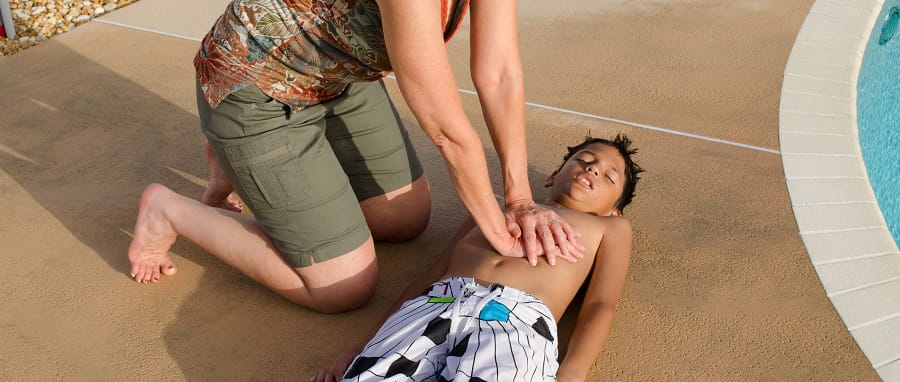
We all know that performing cardiopulmonary resuscitation (CPR) can greatly improve the chance of survival for an unconscious, unbreathing casualty.
While time is of the essence in performing CPR, the quality is also highly important.
Below are some mistakes commonly made when performing CPR.
Not sending for help
Every second counts in an emergency. While you may instinctively want to commence CPR immediately, remember to follow the DRSABCD action plan and send for help as soon as an unconscious casualty is identified. First responders, particularly if by themselves, may tire from performing CPR so it is vital that emergency services are called as soon as possible. CPR can then be performed until paramedics arrive.
Inadequate chest compression depth
Compressions should be around one third of the chest height. Compressions that aren’t deep enough can reduce the effectiveness of the CPR. For adults, use two hands with fingers interlocked, keeping your shoulders directly over your hands to push straight down. Keep your elbows locked to use your upper body strength, not just your arms. (Use one hand for a child and two fingers for infants). If possible, rotate CPR operators every two minutes or so to maintain the quality and effectiveness of compressions.
Not giving rescue breaths
Royal Life Saving WA and the Australian Resuscitation Guidelines recommend rescue breaths during CPR. Blood contains a limited amount of oxygen, and compression-only CPR means the casualty will soon run out of oxygenated blood. For a casualty who has drowned, you will be pumping deoxygenated blood around. Infants and small children in particular have a very high oxygen demand and very low blood volume, therefore rescue breaths are vital. After every 30 compressions you need to deliver 2 rescue breaths.
Not tilting the head
If the airway isn’t open when providing rescue breaths, not enough air will reach the casualty’s lungs to oxygenate the blood. Ensure the airway is open by positioning the head using the head tilt/chin lift method. Lift the chin gently using a ‘pistol grip’ to hold and position the jaw with one hand, while pushing back on the forehead with the other hand. Turn your head after each breath to see if the chest rises and falls. If it doesn’t, adjust the position of the person’s head being careful not to lift or twist their neck.
Chest compressions too slow or too fast
Just as the depth of compressions is important, so is the rate at which they are given. You should aim to deliver compressions at a rate of approximately 100 per minute, or around 2 per second (a good reference is to do them to the beat of the Bee Gees’ Stayin’ Alive). If compressions are too slow, blood won’t be delivered to vital organs. Conversely, too fast and the heart won’t have time to fully refill between each compression. Allow for full chest recoil between each compression, i.e. allow it to return to its natural position.
Does your CPR need a refresh? Book in a requalification course today!
